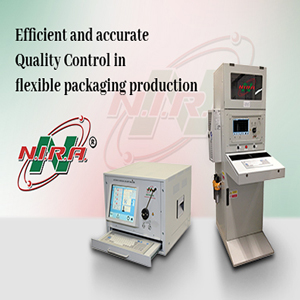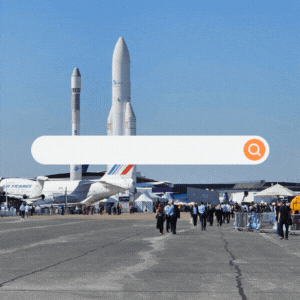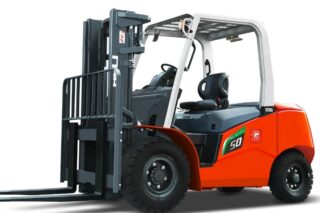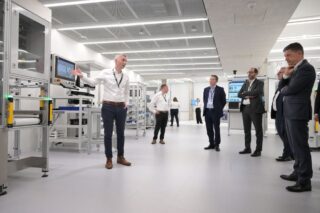LEGO, a global icon in the toy industry, nearly collapsed under the weight of innovation missteps in the late 1990s and early 2000s. The root of their challenges? Misinterpreting disruption and overcorrecting in response. At Automation Fair a couple of weeks ago, David Robertson, Senior Lecturer at MIT Sloan, explored LEGO’s journey and shared valuable lessons on managing innovation effectively. He also provided insight into how entrepreneurs should innovate and how tools like AI can now help drive both innovation and growth. He even put up his own tool for innovators.
For MIT Lecturer David Robertson, LEGO offers a masterclass in the art of innovation. He even wrote a book about the company called Brick by Brick. And we can understand why—over the decades, LEGO has navigated through moments of exceptional success and near collapse, constantly refining strategies to remain relevant.
In a keynote address during Rockwell Automation’s annual event, Automation Fair, David Robertson gave an innovation lesson based on LEGO’s journey. He also offered key takeaways for innovating successfully, especially with the rise of new technologies like AI. He introduced the “Around-the-Box GPT”—a tool for entrepreneurs to generate creative ideas for their businesses.

LEGO’s Innovation Journey: From Core Strengths to Diversification
The Foundation of Innovation
The LEGO brick was patented in 1958 but the company’s emphasis on innovation began in the 1970s when Kjeld Kirk Kristiansen, the founder’s grandson, took over with a fresh perspective. He created the LEGO Technic system in 1977, an entire new building system which introduced gears, motors, and axles, catered to older children and adults. This was followed by the iconic LEGO minifigure in 1978, which revolutionized imaginative play.
“Those two innovations launched LEGO in this golden period of innovation where from 1978 to 1993 they doubled in size every five years for 15 years, just by putting out a better box of bricks, it was just another different box of bricks for the same customers.”
But no innovation lasts forever.
Market Saturation
By the mid-1990s, LEGO faced declining sales due to market saturation. Digital gaming became dominant. With PlayStation, Xbox and Nintendo, kids were getting drawn away, not just from LEGO but from all traditional toys. Also, competitors emerged. Although the LEGO brick was patented in 1958, by the 1980s, all patents had expired. New competitors like Mega Bloks started flooding the market. They looked like LEGO, offered the apparent same quality of products but were cheaper.
“Meanwhile, LEGO was still made in high-cost Denmark, and right at this point, the Danish Kroner was strengthening against the dollar, compounding the challenges. LEGO was getting less value from its money than its competitors.”
LEGO’s response was an overproduction of new products, which diluted their brand identity and failed to reignite growth.
“ I counted LEGO offered 109 new LEGO sets in 1994, 347 in 1998. But the sales didn’t go anywhere.”
In 1998, LEGO had to lay off 1000 people.
The Innovation Dilemma
The company then hired outsiders with little understanding of LEGO’s traditional strengths. Influenced by Clayton Christensen’s seminal book The Innovator’s Dilemma, they believed the company was being disrupted by emerging technologies like digital toys and video games. Christensen’s idea posited that disruptive technologies often start as inferior alternatives but improve rapidly to dominate markets—think digital cameras replacing film.
Convinced that their iconic brick-based toys were under siege, LEGO pivoted hard. They changed their mission statement to reflect ambitions beyond “brick construction.” They invested in areas far removed from their expertise. For example, they launched the action figure Jack Stone, designed for kids who didn’t like construction. But they failed to understand their core customer base.
“The people who buy LEGO are those who love the pride of creation—taking hundreds of pieces and creating something really cool. When they snapped together just 20 or 30 pieces in a box, they felt cheated. Nobody wanted an action figure from LEGO.”
Missteps in Diversification
For Robertson, the new management team didn’t understand the business. But also failed to grasp the market.
In 1999, LEGO indeed faced another challenge when it entered the Star Wars franchise market. While the collaboration seemed promising on paper—leveraging the immense fan base of Star Wars and the timeless appeal of LEGO—the company struggled to navigate this new venture effectively.
“They didn’t understand how much the two audiences—Star Wars lovers and LEGO lovers—overlapped, or how high the demand would be. As a result, they ran out of stock.”
When LEGO Star Wars toys launched in 1999, the demand far exceeded supply. Shelves in stores remained empty, and fans found it nearly impossible to purchase the sets they desired. This resulted in significant lost revenue during the height of Star Wars Episode I: The Phantom Menace’s release—a time when fan excitement was at its peak.
In response, LEGO rapidly ramped up production. However, without another Star Wars movie to sustain interest in 2000, demand plummeted. Excess inventory flooded the market, forcing LEGO to engage in heavy discounting and endure costly product returns.
This mismanagement, combined with broader financial difficulties, nearly led LEGO to bankruptcy in the early 2000s.

Learning from LEGO’s Near-Collapse
For Robertson, LEGO wasn’t complacent or indifferent; they deeply cared about their customers and future. However, their missteps highlight common pitfalls even well-meaning companies face:
1/ Overreacting to Disruption
LEGO assumed their core product was outdated without understanding the enduring appeal of their brick-building experience.
2/ Missteps in Diversification
LEGO attempted to venture into electronic toys and action figures. These products alienated core customers who valued construction. Similarly, LEGO’s failure to meet demand for LEGO Star Wars toys in 1999, followed by overproduction during off-peak years, showcased a lack of market understanding.
3/ Diluting Focus
By pursuing broad, unproven innovations, they strayed too far from their brand identity.
In 2003, LEGO was on the brink of bankruptcy. The company sold assets, including its Legoland parks, to sustain cash flow.
4/ Rebirth: Rediscovering the Core
LEGO’s revival began with Bionicle, a buildable action figure line that blended construction with storytelling. Bionicle’s success taught LEGO the importance of honoring its core—construction toys—while integrating complementary innovations like narratives and characters.
“Bionicle was the toy that saved LEGO. It was created by the team that had done LEGO Star Wars years before, in 1999, and they saw the power of epic stories of good versus evil, and they also saw how big the payments were.”
LEGO reaffirmed its identity as a maker of construction toys. The focus returned to enhancing the brick system with themes, characters, and licensing agreements (e.g., Harry Potter and Star Wars). These moves ensured the brand’s foundational appeal remained intact.
5/ Creating Innovations
LEGO then evolved its business model by integrating complementary innovations. The LEGO Movie (2014) and spinoffs like LEGO Batman humanized minifigures, creating emotional connections with audiences. Theme Parks and LEGOLAND created immersive experiences that extended the brand’s physical presence. Video games, mobile apps, and interactive content reinforced LEGO’s relevance among tech-savvy consumers. Each product launch became a multi-platform event, with toys, apps, books, and online engagement creating a 360-degree brand experience.

Innovating “Around the Box”: Lessons for Business Leaders
For David Robertson, LEGO’s comeback underscores a strategic shift that all companies should consider: innovating “around the box” rather than “outside the box.”
Innovating outside the box means that you are creating entirely new disruptive solutions far from your traditional boundaries. This often results in abandoning the core product. This was LEGO’s big mistake in the 1990s.
Innovating around the box means that you are improving existing solutions or exploring alternative approaches within your core business.
“Innovation starts with respecting your core strengths—what made your company successful—but recognizing that the core alone may not drive future growth. The question becomes: What else can you do for your customers to help them achieve their goals?”
In other words, innovation is not just about introducing new products—it’s about harmonizing different strategies to deliver exceptional value to customers.
Innovation as a Framework: Playing the Piano, Not Just a Key
For Robertson, innovation can be compared to playing the piano. Companies often tend to repeatedly strike the same key—their last successful innovation—because it feels familiar. However, true innovation involves playing chords, combining multiple keys harmoniously to create a richer, more impactful result.
“LEGO faced a near-collapse in the early 2000s because they were stuck playing the same product-centric “key” while ignoring opportunities for complementary innovation. To recover, LEGO realized they needed to create a world for their brand, rather than just sell toys.”
This strategy came to life with the introduction of LEGO Batman which wasn’t just a character—it was an ecosystem. They built a whole world around this superhero, including movies, digital content (LEGO Batman has social media pages!), immersive experiences (LEGOLAND) and partnerships (e.g., McDonald’s Happy Meal toys).
This multi-channel, multi-touchpoint approach transformed LEGO from a toy company to a builder of stories and experiences, making their products irresistible.
Today, LEGO has also strategically expanded its focus within the Star Wars and Lord of the Ring franchises to target a new demographic: adults, specifically AFOLs (Adult Fans of LEGO). This audience, known for their passion for collecting, represents a lucrative market willing to invest in high-priced, premium sets designed for display and collection purposes.

The Role of AI to Drive Innovation : “Around the Box GPT”
Artificial intelligence now is a powerful tool for generating creative ideas and exploring new possibilities.
Therefore, David Robertson has set up an AI-powered tool, Around the Box GPT, that business leaders can use to generate hundreds of potential innovations. By analyzing products, customer needs, and market trends, this AI tool acts as a brainstorming accelerator, complementing human expertise and uncovering potential strategies across various aspects of the business model.
“AI is excellent at generating creative ideas to solve specific problems. I’ve created a custom GPT called Around the Box GPT. You provide your product and target customer base, and it generates 150 ideas across all areas of innovation for your product, suggesting things you might not have considered. Some may not be realistic, but there are always a few valuable insights. It’s a quick process that produces a lot of interesting ideas.”
Dating, Not Fighting
For Robertson, business leaders should not forget that innovation is not about fighting competitors; it’s about “dating” your customers—learning about their lives, understanding their needs, and building a deeper relationship.
“When you treat innovation as a fight against competitors, you end up focusing on reacting to their moves—trying to match their offerings or slightly outdo them in price or features. This back-and-forth competition often erodes value for everyone, leaving little room for meaningful growth or differentiation.”
Rather than battling competitors, LEGO focused on understanding and connecting with its audience and was able to create deeper, more meaningful relationships. That’s how they were able not only to survive but thrive again, delivering value that goes far beyond their core products.
RECAP: Key Takeaways for Innovating Successfully
Here are the key takeaways for any organization looking to innovate, drawn from the lessons of LEGO’s journey:
- Define Your Core: Innovation should respect and build upon the foundational elements that define your brand’s identity and customer loyalty.
- Expand Thoughtfully: Diversification is essential, but it must align with the brand’s values and customer expectations. Reckless expansion can dilute identity.
- Integrate Complementary Innovations: Successful innovations often involve harmonizing products, marketing strategies, and customer interactions, akin to playing chords on a piano.
- Leverage AI Responsibly: AI is a powerful tool for generating ideas and insights but should serve as an input to human-led processes.
- Think Long-Term and Beyond Products: LEGO’s shift from a construction toy company to a global entertainment brand exemplifies the potential of thinking beyond immediate challenges to envision broader opportunities.










